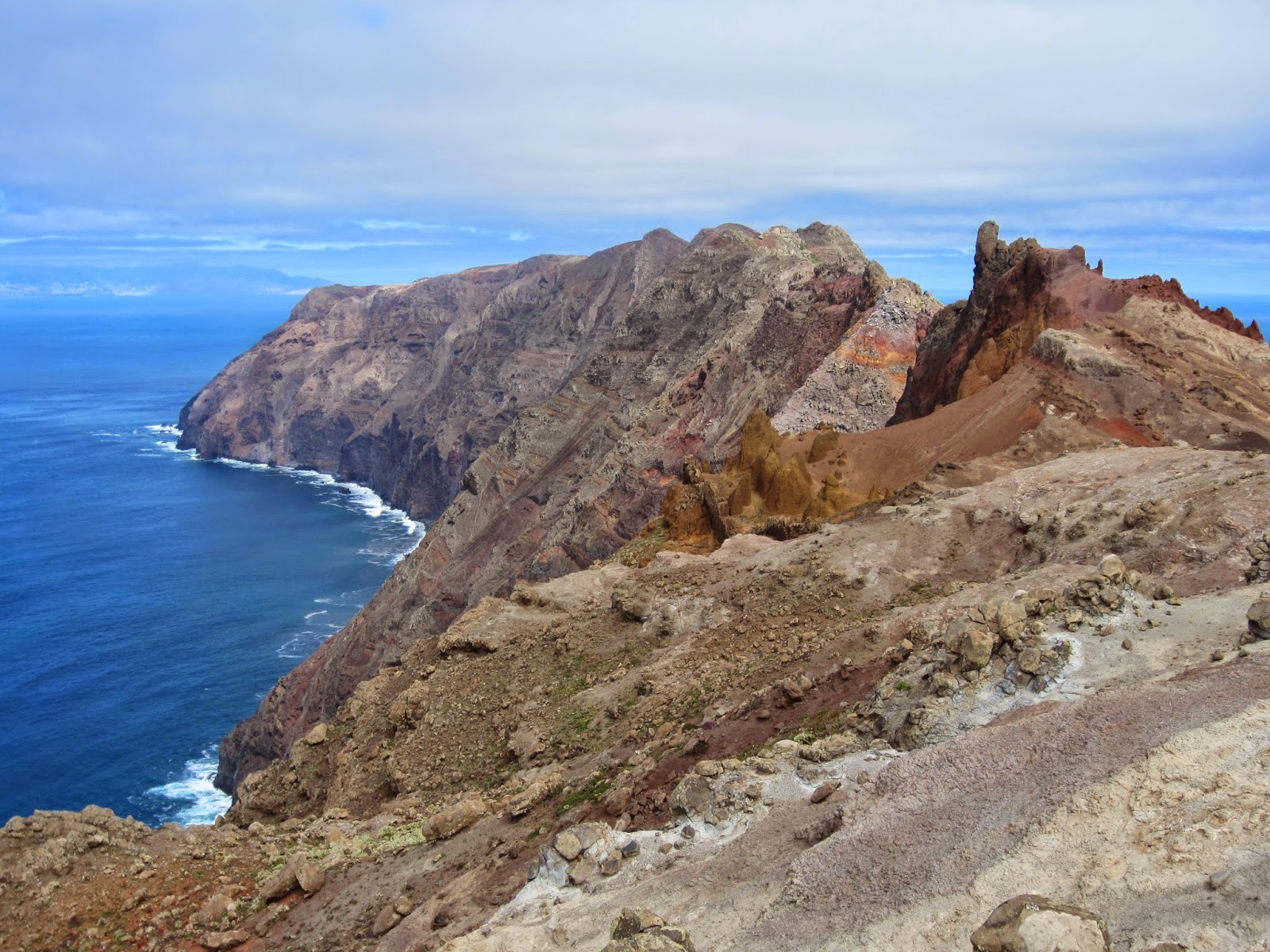Nas ilhas Desertas
Há tres semanas tive a oportunidade de ir às ilhas Desertas com outros membros da equipa da SPEA para trabalhar no âmbito do projeto LIFE Recover Natura. Passámos cinco dias na natureza, no seu estado mais puro e descontaminado, numa experiência inesquecível. Connosco iam duas voluntárias e os vigilantes da natureza do Parque Natural da Madeira. Ficámos na casa construída pelo Parque, onde os vigilantes moram durante todo o ano, indo e voltando em estadias de quinze dias entre uma equipa e outra.
O arquipélago das Ilhas Desertas situa-se a 25 quilómetros da Ponta de São Lourenço, a parte mais a este da ilha da Madeira. É constituído por uma cadeia de três ilhas compridas e estreitas (Ilhéu Chão, Deserta Grande, Bugio), classificadas como reserva natural. Apresentam uma geologia muito diferente da Madeira e oferecem abrigo a uma das aves endémicas mais rara do mundo (a Freira do Bugio Pterodroma deserta) e a foca mais rara do planeta (a foca-monge Monachus monachus). Além disso, existem algumas plantas endémicas, cabras Caprus hircus e diferentes espécies das aves marinhas que nidificam aqui.
Durante os transectos da viagem, e de um outro que fizemos ao redor de uma parte da ilha maior, Deserta Grande, vimos cachalotes, uma tartaruga comum, golfinhos rocazes, patagarros e muitas jangadas de cagarras em repouso. Num dos dias ajudámos os vigilantes a levarem material até à outra ponta da ilha, na localidade do Vale da Castanheira, onde há uma pequena estação científica de apoio ao estudo de plantas invasoras, caracóis e de uma espécie endémica de tarântula, Lycosa ingens.
Durante a nossa permanência, e no nosso trabalho à noite, não encontrámos pintainhos, mas visitámos diferentes lugares potenciais e ouvimos uns chamamentos. Ficamos a espera que, na próxima vez, a equipa seja mas afortunada! Mesmo assim, foi incrível ouvir e ver as cagarras na época pré-nupcial e a chegada das almas negras.
At the Desertas islands
Three weeks ago I had the opportunity to go to the Desertas islands with other people from SPEA's team to work for the LIFE Recover Natura project. We spent five days in pristine nature, enjoyng this unforgettable experience. Two volunteers and the rangers came with us. We stayed at the house which has been constructed by the Madeira Natural Park, where rangers live during the whole year, making turns of fifteen days of stay between different teams.
The archipelago of the Desertas Islands is 25 kilometers south to Ponta de São Lourenço, the eastern part of Madeira. Is formed by 3 long and narrow islands (Ilhéu Chão, Deserta Grande, Bugio) which are Natural Reserve. They present a completely different geology from Madeira and they are home of one of the most threatened species of seabirds (Desertas Petrel Pterodroma deserta) and the rarest seal of the world (monk seal Monachus monachus). Furthermore they host some endemic plants and goats (Caprus hircus), and they are the nesting ground of several seabirds' species.
Durning our transect (going to and coming back from Desertas, and a trip around the North-West part of Deserta Grande) we spotted sperm whales, logger-head turtles, bottlenose dolphins, and several rafts of Cory's shearwaters, resting on the surface of the water. One day we helped the rangers to take some material to the opposite point of the island, at Vale da Castanheira, where is placed a small scientific station for the study of invasive plants, land snails and an endemic species of tarantula, Lycosa ingens.
During our time there, working at night at the colonies, we didn't see neither handle any Barolo's shearwaters, but we found some potential nesting areas and we heared some calls. We hope that next time the team will be more lucky! Anyway, ít has been incredible to see Cory's shearwaters during prenuptial time and the arrival of Bulwer's petrels at nesting grounds.









Sem comentários:
Enviar um comentário